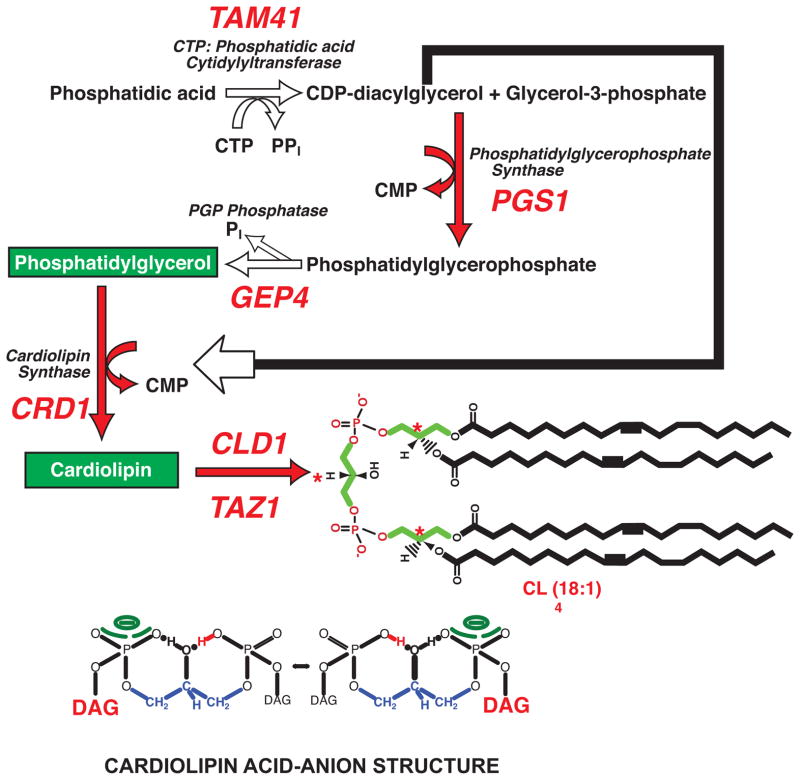Figure 1.
Biosynthesis and structure of CL. The pathway, genes (red) and gene products responsible for CL synthesis in yeast mitochondria are shown (Henry et al., 2012; Tamura et al., 2013). The pathway in higher eukaryotes is essentially the same and is carried out by homologous genes and gene products. The CLD1 gene product (CL specific deacylase) initiates the remodeling of CL fatty acid chain composition in yeast by forming monolyso-CL (Beranek et al., 2009); higher eukaryotes utilize multiple deacylases (Baile et al., 2013). The TAZ gene product in both yeast and mammalian cells is responsible for completing the remodeling of nascent CL by transferring fatty acids to monolyso-CL from other phospholipids (Schlame et al., 2012). The result is highly unsaturated forms of CL as represented by one of the structures found in yeast and mammalian cells. The (*) in red indicates the three chiral centers of naturally occurring CLs; carbon of the central glycerol is only a chiral center if the two adjacent phosphatidyl moieties have different fatty acid compositions. The glycerol backbone (green) is indicated. The lower figure depicts the hydrogen-bonding between the central free hydroxyl of CL and the phosphate residues creating a proton sink in the lipid bilayer and raising the pKa of one phosphate near neutrality (Haines, 2009). DAG denotes the diacylglycerol lipid domain.

